Good afternoon everyone for all of our friends who are at Blurtter and have been joining Blurtter for a long time, hopefully we are always healthy and can always carry out activities as usual. So on this occasion I want to write a little bit about Acraea Terpsichore | Photography | Macro hopefully later it can become a memory for myself, and for other friends who are already married, don't forget to also give directions and input if later in my writing there are still words- words that are not polite, therefore I apologize once again.
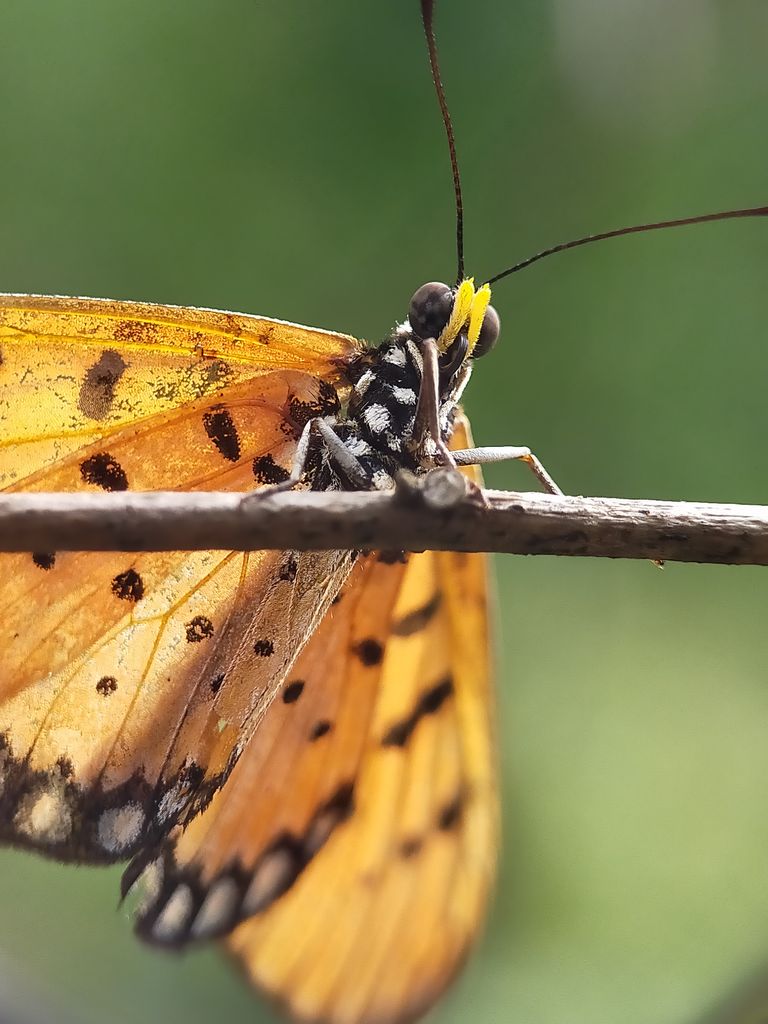
Acraea violae has upper wings that are dark orange in males and brownish yellow in females. The forewings have two black spots across the cell, wider spots in spaces 2 – 6 and 10, the edges of the costa and termen are black. The hindwings have a black spot on the cells, 4-5 black spots on the basal area, a subcostal spot and a series of spots on the disc. Termen edge area is bordered by a black line that has a series of small dots. The head is black with pale yellow and yellow spots, the antennae are black.
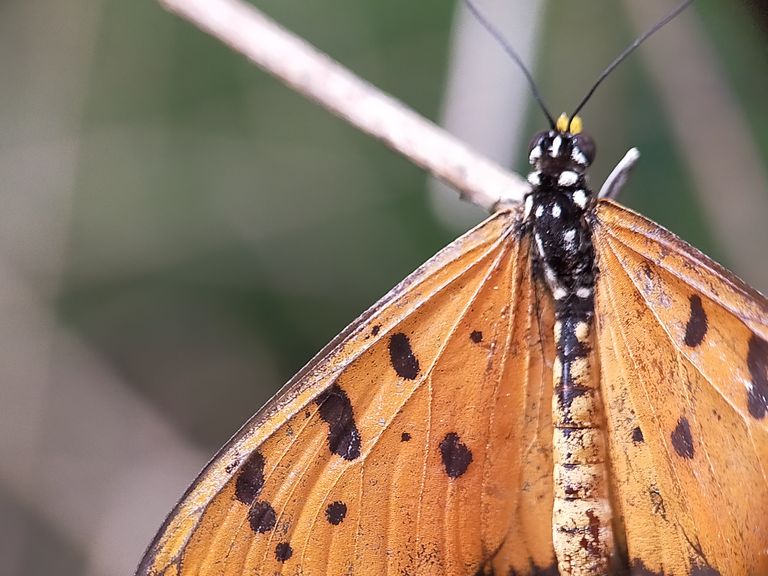
Larvae: Acraea violae larvae are cylindrical in shape, yellowish brown in color, their bodies are covered with turbecles, each with one black setae. In the second instar the caterpillars are orange brown and the setae are replaced by rows of black spines that grow dorso-laterally. Pupae: Pupae of Acraea violae are whitish in color with black bands on the dorso-lateral and orange spots on the lateral and ventral. Pupae length is about 19-21 mm.

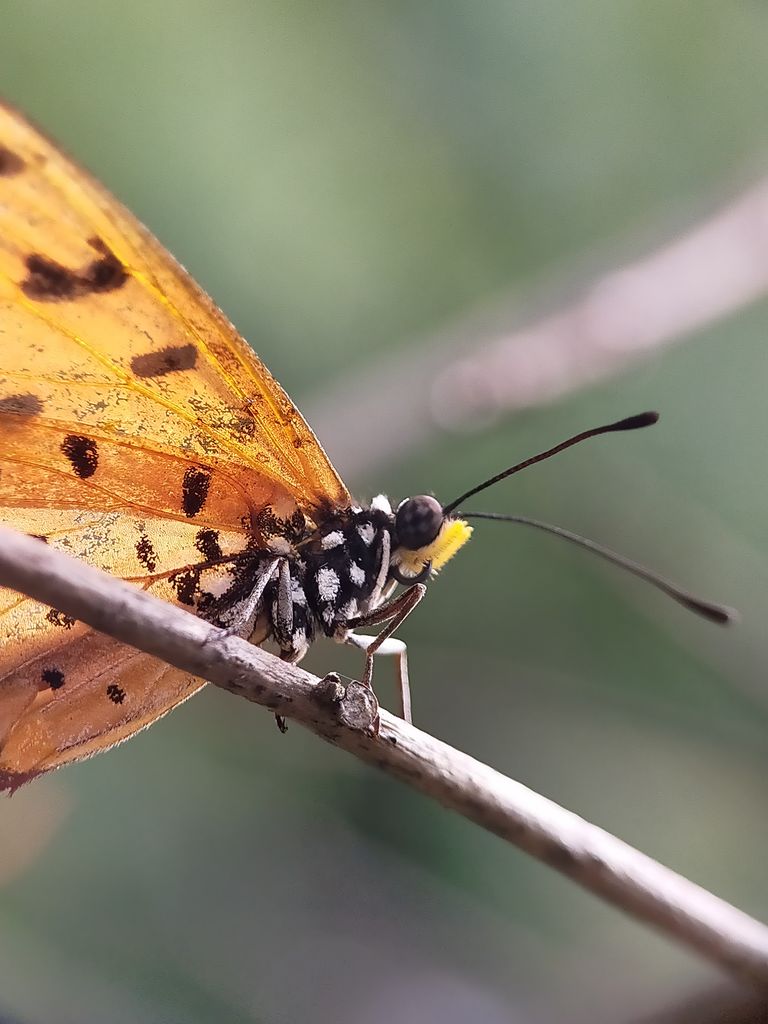
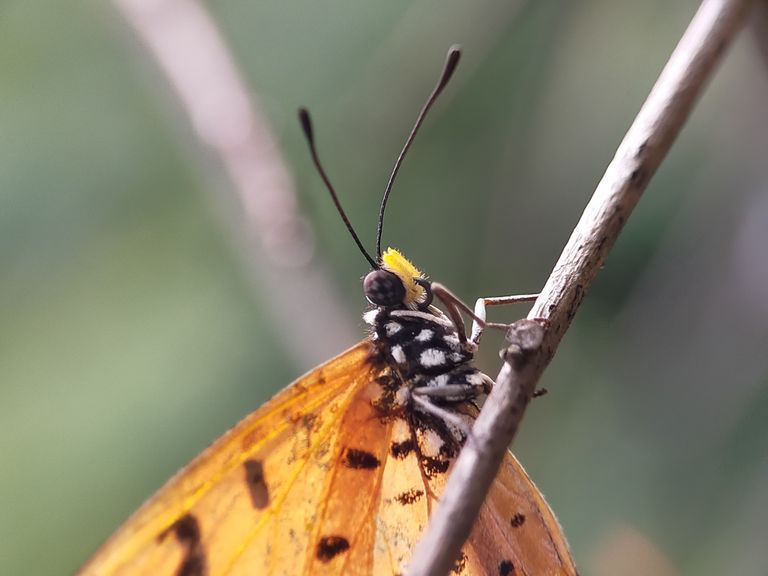
If we look at the shape of this butterfly, it is quite large when compared to other butterflies in general. There is a long debate among taxonomists about whether the correct name for this species is Acraea terpsicore Linnaeus, or Acraea violae Fabricius. Pierre and Bernaud stated that they verified the breed at the Linnean Society of London and considered A. violae to be the same. species as A. terpsicore. [Honey and Scoble argue that the two specimens at the Linnean Society were later added by James Edward Smith who purchased the Linnaeus specimen. In the absence of an authentic syntype, the identity of the terpsicore remains uncertain despite the possibility that they may be synonyms. A. terpsicore was confused with the African species A. Pierre and Bernaud studied this nomenclature problem and rehabilitated the original name Acraea serena for the species.
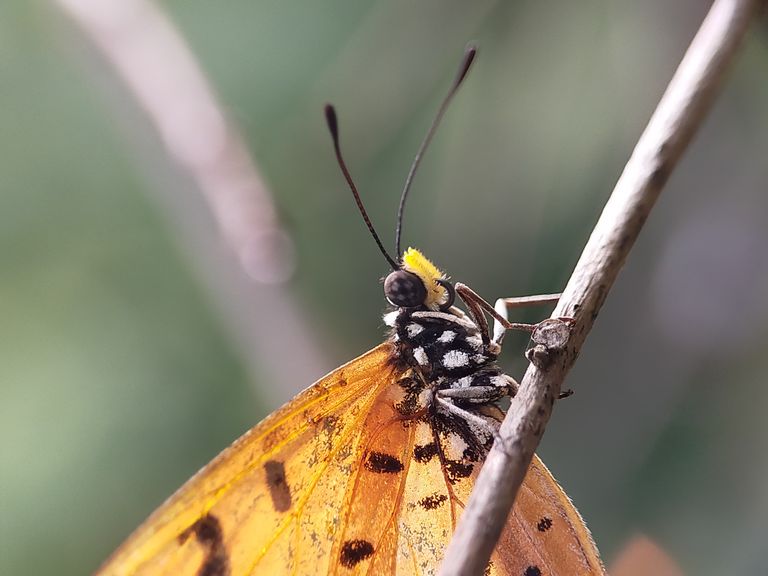
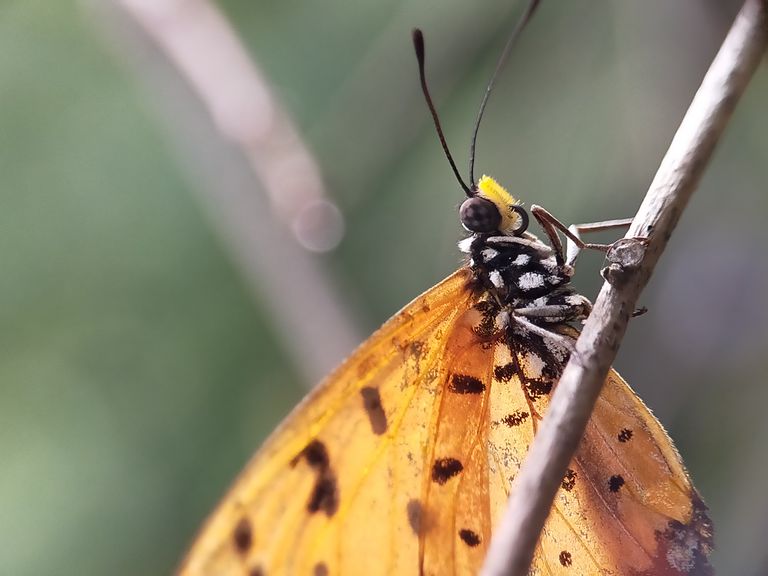
Forewings: a black spot across the cells, and another one irregular, oblique and wider on the discocellular; a series of discal spots between 1, 3, 4, 5, 6 and 10, and the peaks and lasts are black. The top four points of the disc series tilt outward, the bottom two points tilt inward; the black edge to the apex and the terminus narrows to the back, but with slender linear projections in between.


hindwing: a basic series of four or five black spots with a similar spot outside in the center of the cell and a subcostal black spot above it, followed by a series of indistinct black spots and one minute postdiscal black spot between 4 and 6 respectively; finally, a broad black terminal band traversed medially by a series of small spots of the base color. Most of the macular black markings are indistinct, as only the spots on the underside are visible by the transparency of the wing membrane; inner edge of the black crenulate terminal band.
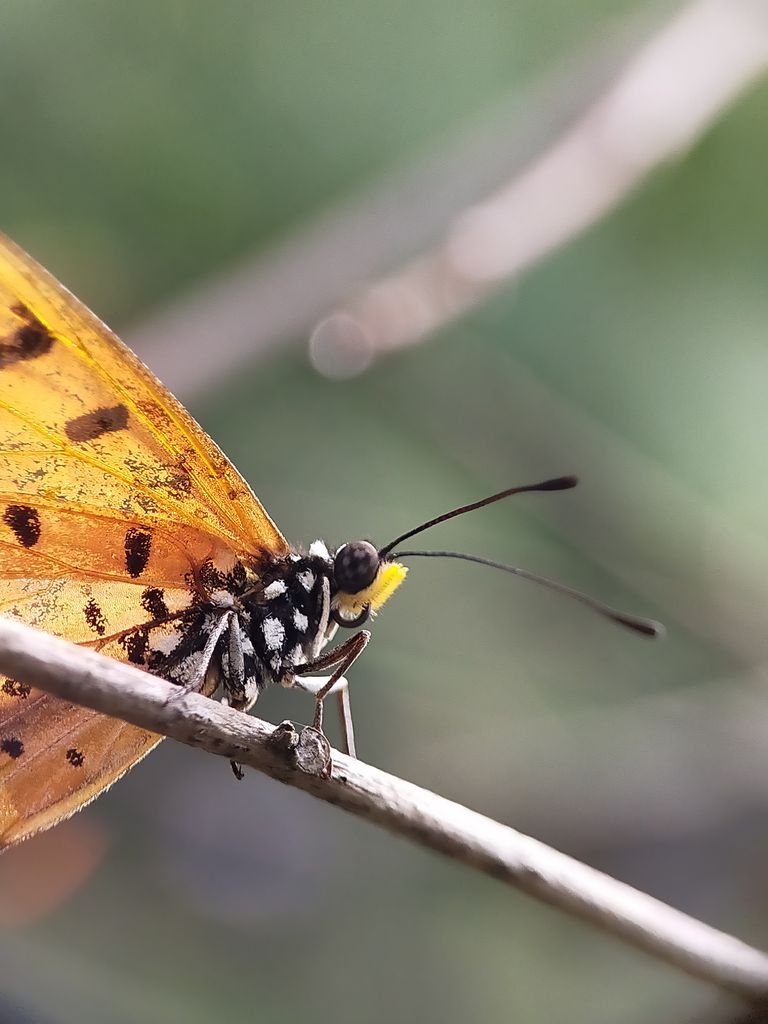
The color of the lower soil is okraceous yellow or pale yellow. Forewings: most whitish at the apex, with black markings as above but somewhat fuzzy and spreading. hind wings: black spots and black terminal bands as on the top, but the spots are more pronounced, nothing blurry; the series of spots crossing the black terminal boundary is much larger and white - not yellow-brown; the base of the wings is black, separated from the series of basal transverse black spots by two or three large whitish spots.

Black antennae, head and thorax black with ochraceous and white spots; the belly is black on the front, the back is yellow-brown with a narrow transverse black stripe; below, palps, thorax and abdomen okra coloured, thorax okra speckled, abdomen with black longitudinal stripe at base.

This species does not fly high, but seems to keep within 3 m of the ground and tends to rest on vegetation in the regions of a meter off the ground. Acraea terpsicore can be seen in abundance wherever its larval food plant (Passiflora species) is found. The adult tends to avoid dense undergrowth and shady areas, instead keeping to open spaces in all types of vegetation.
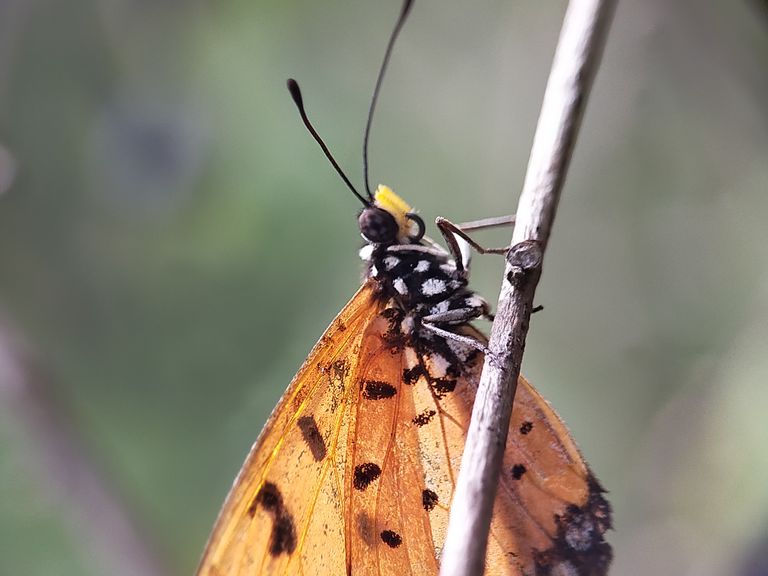
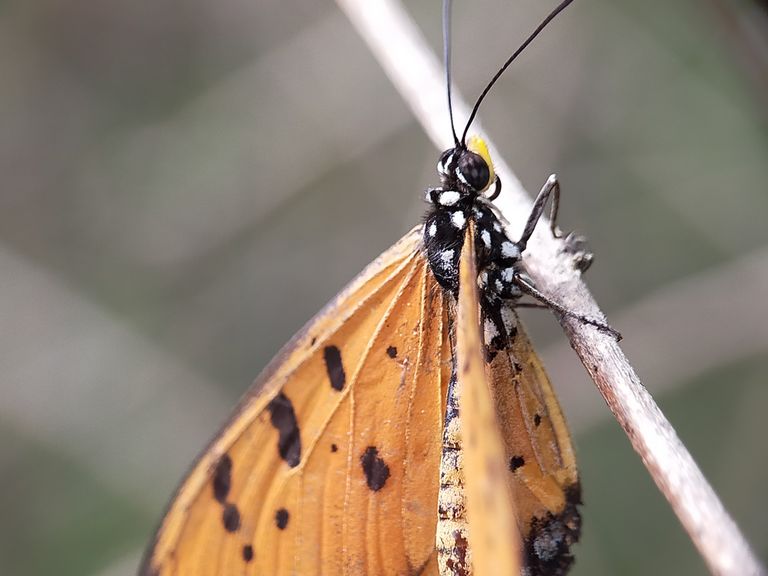





This is all I can say more and less I apologize, hopefully it will be useful for me, and hopefully it will be useful for all readers in general, thank you for visiting my blog, don't forget to follow and vote for my posts. , and one more thing, don't forget to share this post with other friends.
Thank you for visiting my blog, don't forget to follow and vote for me to post, and others don't forget to share this post with other friends.
Greetings to all on Blurtter....